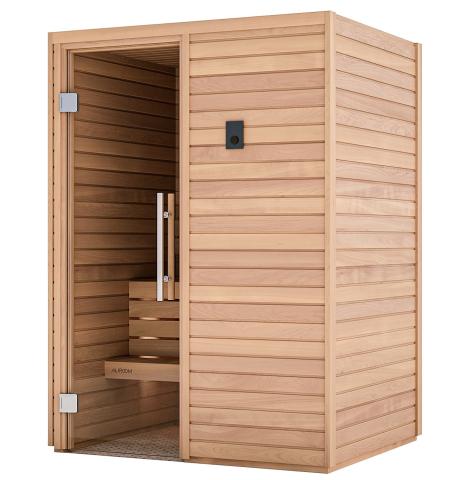Not known Details About Traditional Sauna
Wiki Article
See This Report on Traditional Sauna
Table of ContentsAll About Traditional SaunaOur Traditional Sauna StatementsTraditional Sauna Things To Know Before You Get ThisHow Traditional Sauna can Save You Time, Stress, and Money.
Many of the weight lost in a sauna is water loss and is re-gained upon rehydrating. Without an uncertainty sauna can be a crucial part of a healthy and balanced weight loss program. To look at the differences in between conventional and IR saunas, I will separate these into verifiable, academic, and fabricated distinctions.Hence, the most popular point in the saunawhich is at the ceiling straight above the sauna heateris commonly between 185 and 190 F. Traditional Sauna. Claims that a typical sauna goes beyond 200 F is just not real and not applicable for electric saunas marketed in the United States. The temperature for a far-infrared sauna is normally set between 120 and 140 F; nevertheless, unlike the traditional sauna, the objective in and IR space is not to accomplish a high temperature level
Since of this, the temperature level difference is almost unimportant, since excessive sweating leads to both sauna kinds, but the approach of heating up the body is various. In an IR sauna the bather will really feel hot and will sweat a lot, however at a lot reduced temperature levels. Therefore, if the goal is to spend longer durations of time in the sauna, the IR sauna is an excellent option.

The Ultimate Guide To Traditional Sauna
When the high temperature is accomplished, the elements cycle on and off to preserve the heat. Most typical sauna customers take pleasure in putting water over the rocks to create vapor to elevate sauna moisture levels. The advantages of putting water over the rocks include: making the room a lot more comfortable, moistening the nasal passages, and enabling the usage of aromatherapy by mixing essential oils with the water.In a far-infrared sauna, the warm waves pass through the body to successfully heat up the body and increase the body core temperature. To attain this raised temperature level, Far-infrared emitters develop infrared power which is close to the same wavelength as that which the body naturally emitsoften described as the "Crucial Range" of 7 to 14 microns), so the power is well received by visit this site the body.
When the power enters the body, it causes the body temperature to enhance and ultimately results in sweating. In an infrared sauna it's important for the emitters/heaters to continue to be on virtually frequently. Since there is no mass of rocks to retain warm, the sauna will cool if the emitters turned off.
As stated above, the sauna bather in an infrared area wishes to position himself before operating emitters to get maximum benefit from the warm. The heating time for both spaces can be really different, depending upon just how the areas are utilized. For a conventional sauna, a bather ought to permit 30-40 mins for the space to achieve a wanted temperature and to appropriately pre-heat the rocks.
The Buzz on Traditional Sauna
A well built sauna will normally achieve a temperature of 150-160 F in regarding 30-40 minutes. For hotter temperature levels, the room may need to warm for a longer duration.To some, 15 mins was "thrown away" while the infrared energy heated the wood panels rather than heating up a body, while others locate a pre-heated area to be much more comfy and think a raised beginning temperature level is needed to start sweating. The size of advised usage for each space is about the exact same (10-15 mins per session); nonetheless, as a result of the reduced air temperatures and the capability useful reference to feel the impacts of infrared warm faster than a traditional sauna, it is not unusual for an individual to invest a total amount of 20-30 mins in an infrared sauna.
Standard saunas tend to be bigger (for this reason utilize more electricity) than infrared saunas, although standard saunas are certainly offered in one and 2 individual sizes. For a two-person typical sauna, 5x6 or 5x7 dimension is most popular. The top bench can pleasantly seat 2 or three individuals and is likewise long enough to exist down throughout the sauna session.


The average price per kWH of power in the U.S. is approximately $0.11, so a 4.5 kW heating home system will certainly set you back roughly $.50 to run for one hour, if the heater runs constantly for one hour. Generally a sauna heating unit will run for 75% of the initial hour and 50% of subsequent hours on given that the components cycle once the established temperature level is accomplished.
The Main Principles Of Traditional Sauna
A two person far-infrared space is generally literally smaller sized than a typical sauna, often about 4' x 4' or smaller. The IR heating unit is generally 1.5-1.7 kW utilizing a 120 volt 15 amp plug-in solution. Because the area can be utilized quicker than a sauna area, we will presume the space is made use of for to of an hour consisting of warm up time.Lastly, there is a seldom discussed distinction in the social experience between the two rooms. While our culture has shed a few of the social advantage of the traditional sauna experience, it can be extremely socially gratifying. From family time in the sauna, to heart-felt conversations with better halves, to sauna partiesthe standard sauna experience can lead to intimate socializing.
A lot of higher end infrared spaces include colored light therapy, audio systems and full-glass fronts.
Report this wiki page